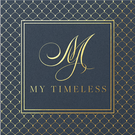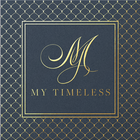Art Nouveau (c. 1895-1910)
19th and 20th centuries; new style of Art Nouveau.
Art nouveau was short lived in jewellery, lasting only from about 1895 to 1910, but although its influence was very strong in the first decade of the twentieth century, its roots, development and full maturity are to be found in the nineteenth century. Nature, and its association with femininity, was the leitmotif of art nouveau as it had been one of the most powerful trends of the nineteenth century, but it took on a totally different aspect,
The favorite subjects of art nouveau jewels were those of the nineteenth century naturalistic tradition: flowers, insects, snakes and animals. Butterflies, dragonflies, cicadas and spiders acquired a shocking and sensual quality
Snakes became sinuous and iridescent symbols of life, eternity and sexuality. Unusual and exotic flowers were favored: orchids, lilies, mimosa, chrysanthemums, dandelions, sunflowers, poppies. Plants and flowers, seaweeds and marine creatures, with their fluid shapes and lines, alluded to life and movement, to the vital circle of birth and death
Insects, creatures, botany, Flora, fauna, and the feminine formed the main motifs of Art Nouveau jewelry, with enamelling becoming a popular technique to create an organic look to the designs
Many well-established jewellery firms in Paris turned to art nouveau design towards the end of the century, such as Rene Lalique, Henri Vever, Fouquet, Lucien Gaillard, Eugène Feuillâtre and Falize
Art nouveau influenced the design of most European countries in varying degrees.
In Belgium the influence was particularly strong in the linear works of Henry van de Velde (1863-1957).
In Scandinavia Georg Jensen (1866-1935) worked silver in fluid and rich stylisations of the natural world.
In Italy the movement did not have strong influences on Jewellery,
In Spain Luis Masriera (1872-1958) worked in a style close to that of Lalique.
Later, between 1900 and 1905, a reaction to symbolism and naturalistic excess encouraged Jewellery design to develop in more geometric and abstract forms, which were to foreshadow the geomemecty of art deco.






